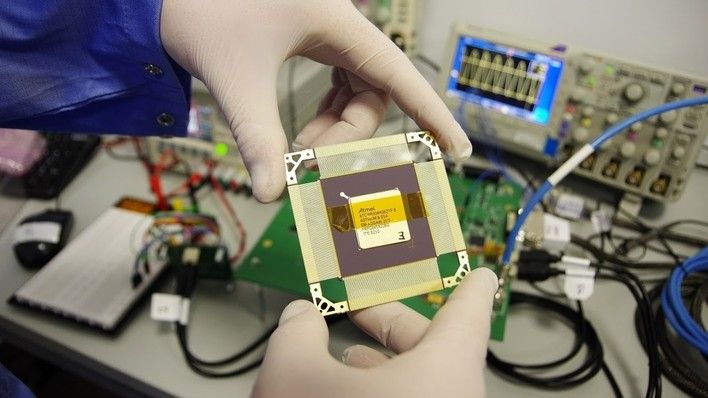Polish Engineers Test Advanced Integrated Circuitry for ESA

The engineers working at the Astri Polska company have just finalized the first stage of radiation testing, pertaining to the AGGA-4 advanced integrated circuitry. The component is destined to be used for space applications in GNSS receivers. The test procedures in question took place at the Belgian Université Catholique de Louvain, between 26th and 28th February, and they involved hardware and software delivered by Astri. The company is working on the aforesaid project within the framework of ESA assignment.
The test programme in question is aimed at verifying the operation of the AGGA-4 circuitry, when exposed to space radiation, heavy ions and protons specifically. During the tests that were conducted last week the circuitry was exposed to heavy ions. Now, throughout the upcoming months the Paul Scherrer Institute based in Switzerland is going to perform a similar test procedure involving the piece of hardware in question, however in this case the circuitry is going to be exposed to protons.
Operation of the AGGA-4 circuitry is monitored at all stages by software and hardware delivered by Astri Polska. The company remains the sole Polish entity that is in possession of know-how required to test the GNSS receivers for space applications. The test results would make it possible to obtain information for the engineers designing a variety of components for the space sector.
AGGA-4 is yet another important project confirming our competency in the field of testing the GNSS receivers designed for space applications. At the moment we are working on three projects associated with GNSS-testing for ESA, the total value of which amounts up to PLN 3.2 million. We are also taking steps to get more work in this area.
AGGA-4 is an advanced integrated circuit designed for space applications. Primarily, it is being used as one of the main elements of the GNSS space satellite navigation receiver. The circuit makes use of the ASIC (Application Specific Integrated Circuit) technology. This renders the component immensely efficient, since it acts as a system designed to carry out a specific task. In the nearest future the AGGA-4 ASIC would be used as a part of the satellite navigation receivers integrated with Earth Observation, navigation or telecommunication satellites, as well as with launch vehicles.
